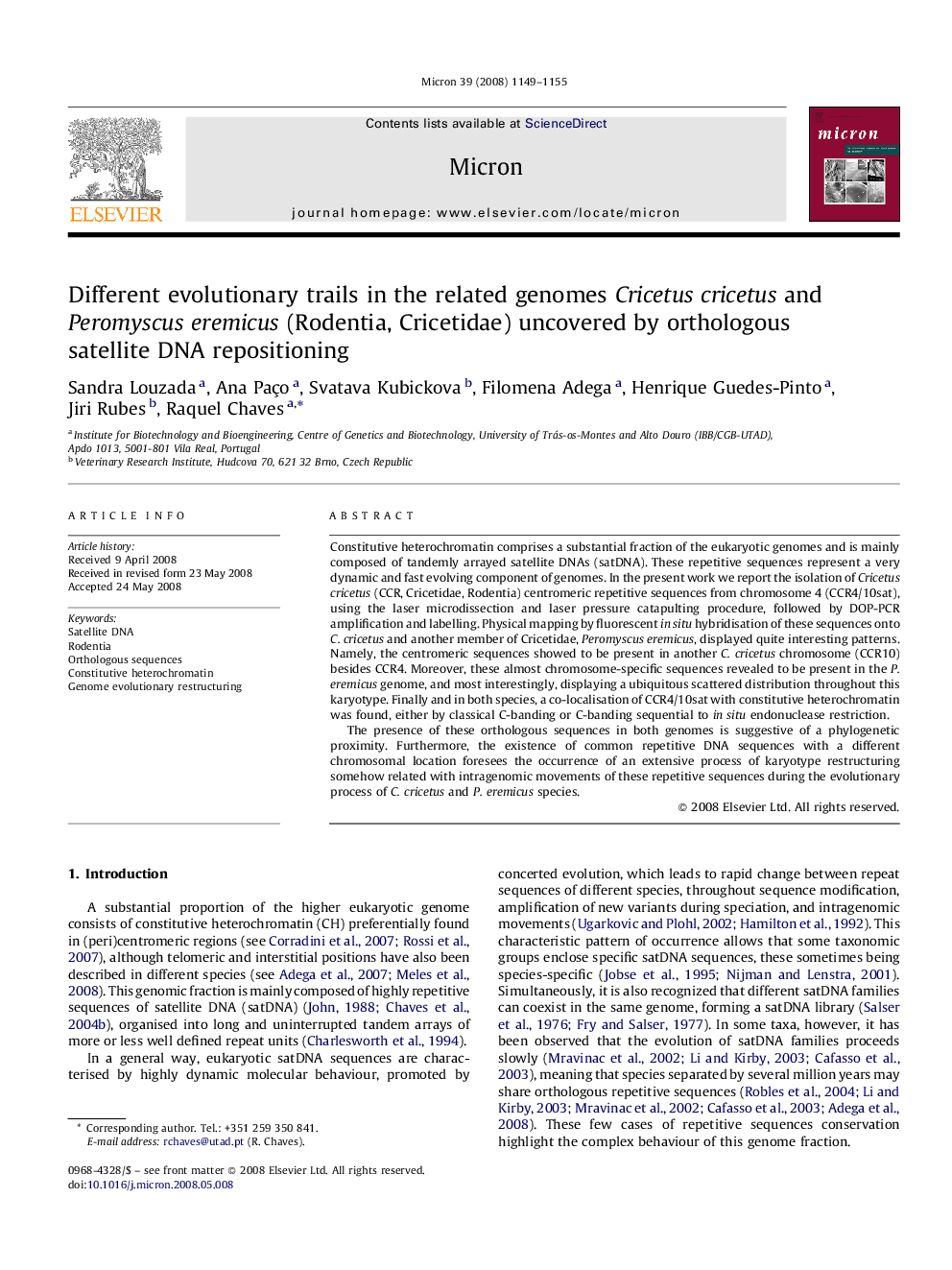| Article ID | Journal | Published Year | Pages | File Type |
|---|---|---|---|---|
| 1589682 | Micron | 2008 | 7 Pages |
Constitutive heterochromatin comprises a substantial fraction of the eukaryotic genomes and is mainly composed of tandemly arrayed satellite DNAs (satDNA). These repetitive sequences represent a very dynamic and fast evolving component of genomes. In the present work we report the isolation of Cricetus cricetus (CCR, Cricetidae, Rodentia) centromeric repetitive sequences from chromosome 4 (CCR4/10sat), using the laser microdissection and laser pressure catapulting procedure, followed by DOP-PCR amplification and labelling. Physical mapping by fluorescent in situ hybridisation of these sequences onto C. cricetus and another member of Cricetidae, Peromyscus eremicus, displayed quite interesting patterns. Namely, the centromeric sequences showed to be present in another C. cricetus chromosome (CCR10) besides CCR4. Moreover, these almost chromosome-specific sequences revealed to be present in the P. eremicus genome, and most interestingly, displaying a ubiquitous scattered distribution throughout this karyotype. Finally and in both species, a co-localisation of CCR4/10sat with constitutive heterochromatin was found, either by classical C-banding or C-banding sequential to in situ endonuclease restriction.The presence of these orthologous sequences in both genomes is suggestive of a phylogenetic proximity. Furthermore, the existence of common repetitive DNA sequences with a different chromosomal location foresees the occurrence of an extensive process of karyotype restructuring somehow related with intragenomic movements of these repetitive sequences during the evolutionary process of C. cricetus and P. eremicus species.
